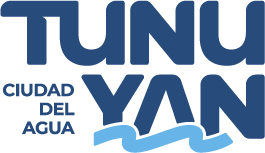
It also includes Medicare taxes, withholdings, health insurance premiums, and more. Payroll accounting is the recording and tracking of all payroll transactions. These transactions include paychecks distributed to employees, deductions and taxes withheld from employee paychecks, and employers’ share of benefit contributions and taxes.
Payroll processing requires you to complete a number of steps, which are presented below. Though some systems that incorporate more or less automation may not include all of these steps, the following process flow will apply to most payroll systems. There are many different kinds of asset classes, but they include current assets and long-term assets. payroll accounting examples You must exit the payroll after it has been run successfully for all personnel numbers. The end of a payroll is a requirement for many follow up processes which are very country and customer-specific. Watch the video to learn the structured process of payroll processing, including releasing payroll, making corrections, and exiting payroll.
Record payables
We will assume the amounts in the following Payroll Entry #4 were remitted on payday. We will assume the amounts in the following Hourly Payroll Entry #4 were remitted on payday. Processing payroll is a complex and time-consuming endeavor that requires adherence to strict federal and state rules and regulations. Small businesses often handle their own payroll using cloud-based software. Other companies choose to outsource their payroll functions or to invest in an integrated ERP system that manages the overall accounting and payroll. The business submits both the employee’s and the company’s contributions to Social Security and Medicare.
If you’re overwhelmed with the many aspects of learning how to do payroll accounting, you’re not alone. It’s important to choose a quality accounting program that will make documenting transactions easier. You’ll thank yourself when an audit arises or you just need to prepare an income or cash flow statement at year-end. When you or your bookkeeper goes to close the books for November, $700 will need to be recorded as a credit to be paid in your accrued payroll account. When you pay the full $1,000 balance on Dec. 3, you’ll clear the balance by debiting the account for $700. For example, workers’ compensation is recognized as an expense once the time period that the premium covers has elapsed.
Employee paid time off
If you’re using a payroll journal, you enter payables as credits because you are increasing the amount you owe. Examples of payroll liabilities include employee wages or compensation and payroll taxes. It is quite common to have some amount of unpaid wages at the end of an accounting period, so you should accrue this expense (if it is material). After recording this entry, you reverse it at the beginning of the following accounting period, and then record the actual payroll expense whenever it occurs. The primary payroll journal entry is for the initial recordation of a payroll.
